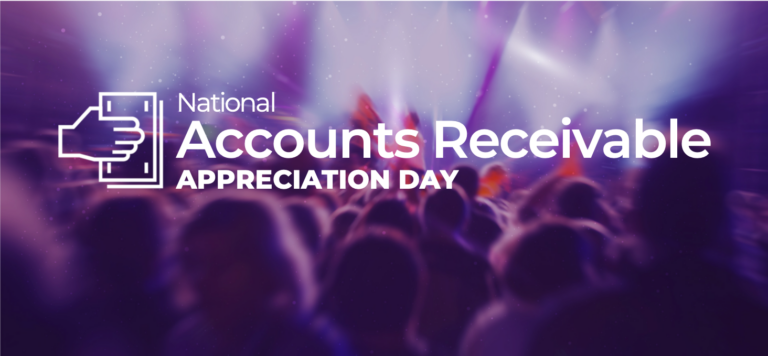A business-to-business (B2B) payment reflects any purchasing transaction that occurs between two companies or organizations rather than with an individual or end consumer. While a physical check is still the most common method used for B2B payments, according to research gathered by Mastercard Inc., this frequency has reduced over the past few years while credit-card and other digital payment options have become more common.
Much of this growth comes from the increased availability of e-payment solutions and the ongoing trend to reduce paper use. The COVID-19 pandemic furthered this push to digital as many businesses converted to electronic payment strategies to reduce the likelihood of error or delay.
Alongside this shift, many businesses began specifically exploring B2B payment offerings with automation capabilities. These digital platforms—routinely either automated accounts payable (A/P) or accounts receivable (A/R) systems—offer a streamlined, centralized mechanism for handling cross-company transactions with limited human interaction.
This article will cover general elements of the B2B payments landscape. For a deep dive into the topic, review our 2021 webinar: The State of B2B Payments.
Types of B2B payments
When transferring funds to another business, there are several different methods you can choose from—or combine—each with its own advantages and disadvantages.
Cash
Hard currency is accepted almost anywhere, and in the past, it was also the most common type of B2B payment. However, cash transactions quickly become problematic for modern businesses, particularly as the scope of purchases increases. Maintaining sufficient currency to cover a sizable delivery from a supplier is often impractical. And keeping large amounts of cash on site creates an unnecessary risk for all manner of fraud, misappropriation, and outright robbery.
Transferring cash also becomes complicated when dealing with transactions between companies in different countries or continents.
Check
As previously mentioned, a paper check is still the most common B2B payment type, representing over half of all transactions. And while a signed check offers more protection than straight cash, checks can also easily be misappropriated.
In fact, a report compiled by the Association of Certified Fraud Examiners found that 10% of the studied cases involved some form of check tampering, and the median loss to these businesses was $100,000. Further, the study also noted that smaller businesses—which routinely have fewer anti-fraud measures in place—were four times more likely to fall victim to this method than their larger counterparts.
Check-based compensation strategies also routinely require a number of manual steps, each of which creates the opportunity for human error to complicate or delay the payment process.
Automated Clearing House (ACH)
Similar to paper checks, an ACH transaction transfers funds out of or into a company’s checking account. However, these payments occur electronically and are often completed in less than three business days—a marked time improvement over a mailed check.
And while ACH transfers offer a more convenient payment method, they have a few drawbacks. For example, while an individual transaction is electronically handled, setting up the initial authorizations often requires a fair amount of paperwork to be filed. This is one of the reasons why ACH payments are mainly considered for frequent, recurring transactions.
At the same time, these financial exchanges require both parties to share more of their banking information, which creates the potential for fraud. And in the event of a mistake—such as transposed numbers in a payment—these transfers are difficult to cancel or reverse. Finally, ACH transactions can only be conducted between parties in the United States, so they’re irrelevant if your vendors or customers are across the border.
Credit card
Referring back to the previously-mentioned MasterCard study, research suggests that in North America alone, B2B credit card payments reflect around $1 trillion in transactions each year. This payment method is routinely chosen for its convenience and speed. And credit card activity can be easily tracked either online or via paper statements.
Many credit card companies have also begun offering virtual card services to help combat fraud. These temporary, disposable payment methods essentially mimic a traditional credit card, offering a one-time-use 16-digit card number, applicable card security code (CSC), short-term expiration date, and preset spending limit. By using a “virtual” card, users can avoid sharing any directly-identifiable account information while completing their transaction.
Altogether, credit cards offer a fairly versatile, easy-to-use payment option. However, you’ll also need to bear in mind annual fees, applicable interest rates, and the negative impact of late payments.
Wire transfer
For real-time payments, wire transfers are a common choice. Rather than relying on batch-based processes—like ACH payments do—these digital transactions typically occur within 24 hours, and the corresponding funds are made immediately available to the receiver once the transfer hits the account. In addition, wire transfers can be sent across national borders.
There are two types of wire transfers: cash and digital. Cash-based transfers are typically sent to a payment office where the recipient can collect their funds. Conversely, digital transfers occur between two banking institutions.
And while wire transfers are one of the most straightforward B2B payment options available, the associated costs tend to be higher. Further, many wire transfer services operate only during regular business hours, limiting the time range when these payments can be sent.
Fintech
Over the past several years, financial technology companies have emerged, offering payment processing services as either a payment facilitator that provides a payment gateway to process the transaction or as a merchant of record (MoR) that oversees the entire sale and underlying payment. Some common providers you may have heard of include:
- Flywire (our parent company)
- PayPal
- Venmo
- Square
- Stripe
While convenient, the associated processing fees for this approach can quickly add up, so you’ll want to choose a cost-effective partner. And that’s one of the reasons why we’ve updated our automation platform with Flywire software. Not only does this expand our ability to support diverse payment methods in more than 140 currencies across 240 countries and territories. But now our users can also seamlessly work with Flywire for domestic and cross-border payments — versatility not available from other providers.
What processes can be improved with B2B automation?
Data entry
One of the most mundane yet time-consuming tasks that your workers will face is transcribing relevant information from incoming invoices and other paperwork to your financial systems. Rather than introducing the potential risk of transcription errors, instead consider software with optical character recognition (OCR) capabilities that can quickly, easily, and accurately capture these critical details from your paperwork—all with limited human interaction.
Document matching
Before paying an invoice from one of your vendors, you should always verify that the billed amount matches what you ordered and what was delivered. Similarly, when receiving payments from your customers, you’ll want to perform a corresponding verification that confirms that the customer is accurately paying their full bill.
Handling this document matching manually can take up a lot of time, but if all of these records are stored electronically, an automated verification tool can complete the same task in seconds.
Process workflows
At the start of any automation project, companies will typically engage in an initial process mapping and streamlining effort to create consolidated workflows for incoming and outgoing payments. And once automated, these workflows can shepherd the appropriate paperwork and transactions through the process quickly and efficiently.
Analytics
Not all patterns can be detected by the human eye, but with smart, AI-powered analytics tools, your business can begin recognizing commonalities that were previously unnoticed. For example, many A/P automation platforms incorporate fraud detection tools to flag risky behavior that might seem benign to the untrained observer. Similarly, you can more easily identify process and application interdependencies that might unnecessarily slow your operations.
Data sharing
Whatever A/P or A/R data that you’ve captured will likely need to be accessed, manipulated, and managed by multiple applications. And by choosing an automation platform that offers extensive integration capabilities, you can streamline these data-sharing efforts, avoiding time-consuming transcription and making it easier to access timely, relevant data for your workers, vendors, and customers.
Benchmarks
You won’t know if your accounting processes are working effectively unless you can accurately track their performance. And through automation, you can easily capture and monitor key performance indicators (KPIs) for your accounts payable and accounts receivable efforts. Some commonly tracked metrics include:
- Day sales outstanding (DSO)
- Collections effectiveness index
- Accounts receivable turnover
- Average time to pay
- Per-invoice processing costs
- Percentage of invoices requiring corrections
- Capture rate for early-payment discounts
Digital payments
Consider employing a portal to simplify incoming and outgoing payment efforts. With a dedicated site, your customers can log into their account and submit electronic payments quickly and easily. Conversely, with a B2B e-invoicing platform, you can allow your suppliers and vendors to create and submit their own invoices, meaning you’ll receive all the necessary details in a standardized format.
Chasing
Getting paid isn’t always easy—especially if your follow-up efforts for unpaid invoices are poorly coordinated. However, with an automated payment chasing platform, you can standardize and schedule these touches via multi-channel communications, helping to ensure that these outstanding invoices don’t fall through the cracks.
Why is automation beneficial?
There are many advantages that an automated B2B payment process can offer to your business. Some common improvements include:
- Simplified auditing and reporting: By centralizing your A/P and A/R processes through a common, company-wide workflow, you can more easily capture relevant metadata and easily trace the status and timeline for each incoming and outgoing payment.
- Reduced paper use: The shift to electronic processing can not only help minimize the likelihood of manual errors introduced during data entry but also simplify storage and search efforts.
- Accelerated timelines: Workflow automation eliminates unnecessary delays between process steps and helps to more easily identify any bottlenecks that are retarding your payment efforts.
- Increased fraud prevention: With a centralized process, you can reduce the number of people who have access to your critical financial systems, and by employing role-based access restrictions, you can further limit the potential for internal malfeasance.
- Satisfied workers: By offloading repetitive, mundane, time-consuming tasks onto the technology, you can free up your accounts staff to focus on more strategic, rewarding activities.
Invoiced: B2B Automation Made Easy
Whether you automate your entire A/P and A/R processes or you limit your efforts to a handful of key invoicing operations, the right B2B payment automation solution will help you save time, labor, and money. And with our Accounts Receivable Automation and Accounts Payable Automation software, we can provide you with a new and better way to send and receive payments.
Even better, if you’re looking to offload some of the responsibility tied to your transactions, take advantage of what Flywire has to offer. Flywire Payments can keep your payments running quickly, smoothly, and painlessly with zero effort on your part.
From integrations to analytics, from payments to process workflows — our tools provide businesses with the simple, streamlined solutions they need to advance their financial goals.
Schedule a demo today to learn how to get paid faster and pay your bills on time!




